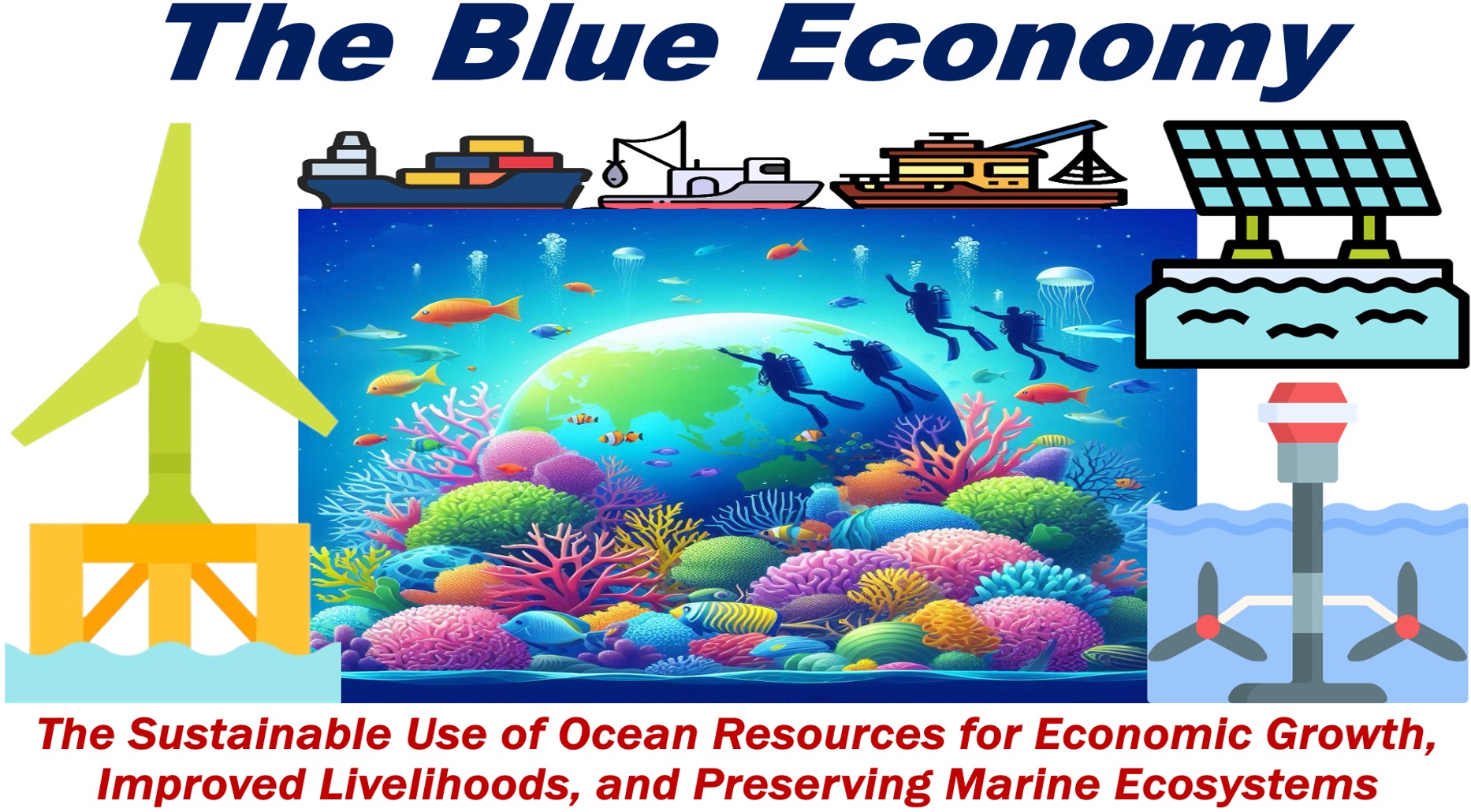The blue economy refers to the sustainable use of ocean resources for economic growth, improved livelihoods, and jobs while preserving the health of ocean ecosystems.
If you are involved in business or policy, you might already be aware that the oceans cover more than 70% of our planet. They play a vital role in regulating the climate, providing food, and supporting a wide array of economic activities.
According to the United Nations, the blue economy covers a diverse range of economic sectors and policies that collectively gauge whether the use of ocean resources is sustainable. One of the key challenges lies in understanding and managing various aspects of oceanic sustainability, from sustainable fisheries and ecosystem health to pollution prevention.
Blue Economy – A Delicate Balance
In the blue economy, the focus is on balancing economic development with the long-term health of ocean ecosystems.
This concept goes beyond traditional marine industries like shipping and fishing. It includes emerging sectors such as renewable energy (like offshore wind farms), marine biotechnology, aquaculture, deep-sea mining, marine spatial planning, marine robotics, ocean monitoring, and sustainable tourism.
Each of these sectors has the potential to generate significant economic benefits while ensuring that the ocean’s health is maintained for future generations.

Businesses and the Blue Economy
If you’re involved in industries related to the ocean, the blue economy might already be affecting your business.
For example, if your company is in the seafood industry, you may have noticed a shift toward more sustainable practices. This could mean adopting methods that reduce bycatch (unintended capture of non-target species) or investing in *aquaculture operations that minimize environmental impact.
These changes are part of a broader effort to ensure that ocean resources are used responsibly.
* Aquaculture is the farming of fish, shellfish, and other aquatic organisms under controlled conditions to meet demand while minimizing environmental impact.
A Massive Resource
According to the Grantham Research Institute on Climate Change and the Environment, part of the London School of Economics, experts estimate that the blue economy is currently worth over $1.5 trillion globally each year.
Thirty million people work directly within the blue economy, which supplies a vital source of protein for more than three billion people.
The Institute cites the OECD, which predicts that the ocean economy may be worth over $3 trillion by 2030—twice its current size.
Sustainable Fishing
Sustainable fishing, that is, harvesting fish at a rate that allows populations to regenerate and ecosystems to remain balanced, is a core component of the blue economy.
Overfishing has led to the decline of many fish populations, threatening food security and the livelihoods of millions. Over the past century, many marine species have gone extinct due to human activities, including overfishing, habitat destruction, and pollution.
By promoting sustainable fishing practices, the blue economy aims to ensure that fish stocks remain healthy and productive. This, in turn, supports communities that rely on fishing for their income.
Renewable Energy
Another critical area of the blue economy is renewable energy. Offshore wind farms, wave energy, ocean thermal energy conversion, tidal power, and floating solar panels are all part of the effort to harness the ocean’s potential for clean energy.
By investing in these technologies, we can contribute to reducing greenhouse gas emissions and combating climate change while also tapping into a growing market. In other words, we can protect our seas and oceans and boost our economies.
Marine Biology
The ocean is home to countless organisms, many of which have unique properties that we can use in medicine, cosmetics, and other industries.
By exploring these resources sustainably, we can help drive innovation and economic growth.
The Blue Economy – Brief History
The concept of sustainable ocean practices has been growing since the 1970s, with organizations like Greenpeace actively advocating for the protection of marine environments.
Gunter Pauli
Gunter Pauli, a Belgian entrepreneur, economist, and author, coined the term “Blue Economy” in his 2010 book “The Blue Economy: 10 years, 100 innovations, 100 million jobs.”
Pauli’s vision was to create sustainable economic practices that mimic natural ecosystems, using the ocean’s resources without depleting them.
The 2012 Rio+20 Conference
The idea of the blue economy gained widespread attention after the 2012 Rio+20 Conference, which emphasized the oceans’ crucial role in global sustainability efforts.
Since then, the blue economy has become an integral part of discussions on sustainable development, highlighting the importance of balancing economic growth with the health of our oceans.
Although we have made some progress to protect our marine environment over the past few years, we still have a very long way to go.
The blue economy is all about using ocean resources in a way that balances economic growth with the health of our oceans. It includes sectors like renewable energy, sustainable fishing, aquaculture, and marine biotechnology. By focusing on these areas, we can reduce greenhouse gas emissions, protect marine species, and boost the economy. Embracing the blue economy ensures that we can continue to benefit from the ocean while preserving it for future generations. This approach not only supports the goals of the business community but also contributes to a more sustainable world.
